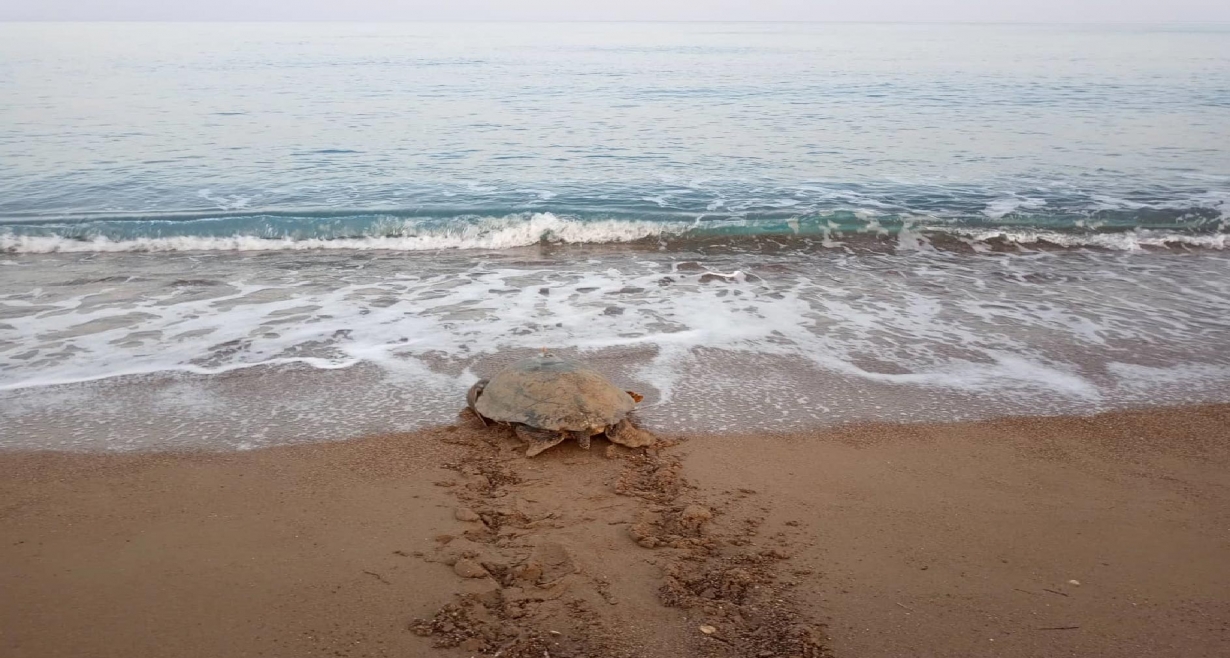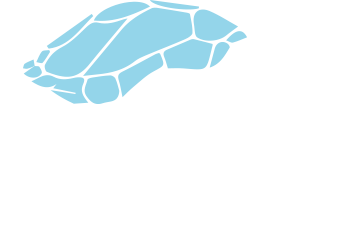Greece

Loggerhead satellite tagging in Southern Kyparissia bay (ARCHELON)
Loggerhead satellite tagging in Southern Kyparissia bay (ARCHELON)
Kyparissia bay in Western Peloponnese, Greece hosts the largest nesting loggerhead population in the Mediterranean.
ARCHELON’s team was able to conduct an exciting activity in the framework of “Conservation of Marine Turtles in the Mediterranean Region” project.
During the nesting seasons 2018-2019, satellite tags were deployed in 21 loggerhead turtles (9 in 2018 and 12 in 2019) in order to investigate their movements at sea between each nesting effort as well as their movements after their nesting is completed for the season. Data from satellite tags are also expected to give us some indication on their migration routes to overwintering and foraging habitats. This knowledge will be used for the improvement of sea turtle conservation management strategies and the reduction of negative interaction with fisheries.
As mentioned already, Kyparissia Bay hosts the largest nesting population of loggerhead turtles in the Mediterranean Sea. The largest number of nests is found at the southern part of the Bay, in a 10-km long nesting area. ARCHELON has been working in this area, conducting a long-term loggerhead tagging project since 1982 and implements a monitoring program of nesting activity every year since 1984.
How does the satellite tag work?
We all know that female sea turtles are emerging from the sea to nest during night hours. Right after nesting is completed, trained scientists attach a specially designed small-sized transmitter to the carapace of the sea turtle. As the turtle surfaces for breath or comes completely out of the water, the transmitter sends a signal to an Argos satellite and this is how researchers can easily follow the turtle’s movements.
Besides tags, these 21 female sea turtles were also given names.
The movements of these 21 loggerhead sea turtles are now online and you can follow their travels by clicking these links:
2018
https://my.wildlifecomputers.com/data/map/?id=5c9cd96601fbb035223b3263
2019
https://my.wildlifecomputers.com/data/map/?id=5d03b143e9b35123af0deef3
Both years combined
https://my.wildlifecomputers.com/data/map/?id=5d303fad31af595b0a0e66b9
Rapid assessment of the conservation status of Loggerhead nesting beaches in Greece (WWF Greece)
The main objective of this activity was to update the existing information on the conservation status of the Loggerhead nesting beaches in Greece.
We started with a desktop review of the Loggerhead’s suitable nesting beaches, based on available scientific and grey literature, sightings of stranded turtles, as well as personal communication with Loggerhead turtle experts and Coast Guard authorities. Digital images were also used for a first rapid assessment of the situation in every beach.
The second phase of the project included the design and finalization of a detailed field protocol. This protocol allows the standardised assessment of the current state and the status of each nesting beach regarding the anthropogenic activities, the impacts of these activities on the Caretta caretta nesting habitat and the conservation status of the Loggerhead nesting beaches.
This field protocol requires information on basic physiomorphological data, human activities and possible sources of pressure both on the beach itself and on the adjacent coastal area. The physiomorphological data can also assess the potential value of a beach for nesting marine turtles based on physical features and various issues that influence nesting potential and habitat quality - in lieu of and in addition to signs of turtle nesting activity. The information on human activities and their impact, included data on fixed or semi-fixed development behind the beach (houses, huts, bars, cantinas, fences, etc.); obstructions on the beach (boats, furniture, etc.); disturbance (e.g. access, recreation, etc.); evidence of light pollution on the beach; and other natural processes that may affect the beach nesting quality.
This work builds upon previous experience within the WWF network, namely WWF Turkey’s protocol from the “Marine turtle nesting beaches comparative assessment survey 2013, Turkey” as well as the WWF Greece’s protocol for the rapid assessment of small island wetlands.
The project team visited and assessed the conservation status of 98 Greek nesting beaches of the Loggerhead turtle. All major nesting beaches and the majority of moderate ones have been monitored. The overall lenght of the beach surveyed, both day and night, was 230.81 km.
The conservation status of each beach was subsequently assessed, and a simple colour code was used for its visualisation (red=poor, blue=moderate and green=good conservation status). Of the assessed nesting beaches, 27% were assessed as being in a good conservation status, 30% in moderate and 42% in poor conservation status. This information has been uploaded on “Oikoskopio”, WWF Greece’s open web mapping platform (http://short.oikoskopio.gr/2n9) where the interested user can combine the beach assessment with other relevant environmental information.
In general, human activities and pressures are observed in the vast majority of the assessed areas. For example:
- Almost 72% had umbrellas and beach furniture, usually placed behind the front zone of the beach, thus overlapping with possible nesting spots. The majority of related businesses favor a compact setting of umbrellas and sea beds that usually leave very little space in between.
- 95.8% had infrastructures such as roads, permanent and/or semi-permanent trails, walkways, concrete structures, fences, jetties etc.
- In more than half of the assessed beaches (56) some kind of intensive management was observed (fences, planting and usually also watering of no-native vegetation, cleaning etc.).
- 28% were cleaned with heavy vehicles.
Funded through the “Apps for Earth” Apple and WWF campaign.
Increasing knowledge on migration routes and foraging sites in the Northern Aegean Sea (MEDASSET)
The research project “Increasing knowledge on migration routes and foraging sites in the Northern Aegean Sea (Greece)” will help to fill key knowledge gaps about sea turtle occurrence in Northern Greece.
Greece hosts some of the most important nesting sites of sea turtles across the Mediterranean Sea, as well as wintering and foraging sites for resident populations of adults and juveniles. In the past few years, a small number of sea turtle nests have been reported in locations in Greece where nesting has not usually occurred in the past. Additionally, information on stranded individuals has been increasing during the last decade across Greece. Both factors indicate a rising need to identify and understand any possible shift in sea turtles’ behaviour, as they are a highly migratory species and they may be responding to climatic changes by using new habitats to nest, feed and overwinter.
As a result, MEDASSET aims to increase knowledge on migration routes, foraging sites and sporadic nesting in North Aegean. A previous study by MEDASSET in the same area in 1991, had indicated suitability of potential nesting sandy beaches in Northern Greece. During the first phase of the project in 2019, MEDASSET surveyed the North Aegean Coast (from Thessalia to Thrace, including the islands of Samothraki, Thassos, Limnos, Agios Efstratios, Lesvos, Chios, Skiathos, Skopelos and Alonnisos) in order to collect information on nesting and in-water sea turtle presence through a rapid questionnaire survey targeting fishers, responsible authorities and locals. Survey results were combined with stranding and observation data, to create a baseline to direct further targeted research on nesting beaches suitability and population demographics.
Consequently, during the second phase of the project, MEDASSET will focus on researching all sites which have been reported either as nesting sites or suitable for nesting. Drone surveying and traditional methods will be combined to further assess and map beach suitability in the aforementioned geographic area. In addition, sea and sand temperature data will be collected for integrated monitoring.
Image Gallery
-
 Kyparissiakos nests and tyre marks
Kyparissiakos nests and tyre marks
Kyparissiakos nests and tyre marks
Kyparissiakos nests and tyre marks
-
 Survey in North Aegean
Survey in North Aegean
Survey in North Aegean
Survey in North Aegean
-
 Peloponnese nest umbrella planting
Peloponnese nest umbrella planting
Peloponnese nest umbrella planting
Peloponnese nest umbrella planting
-
 Satellite tracked sea turtle
Satellite tracked sea turtle
Satellite tracked sea turtle
Satellite tracked sea turtle
-
 Satellite tracking sea turtle
Satellite tracking sea turtle
Satellite tracking sea turtle
Satellite tracking sea turtle
-
 Survey in North Aegean
Survey in North Aegean
Survey in North Aegean
Survey in North Aegean
https://medmarineturtles.org/countries/21-greece#sigProIddf8c0b0ff7



